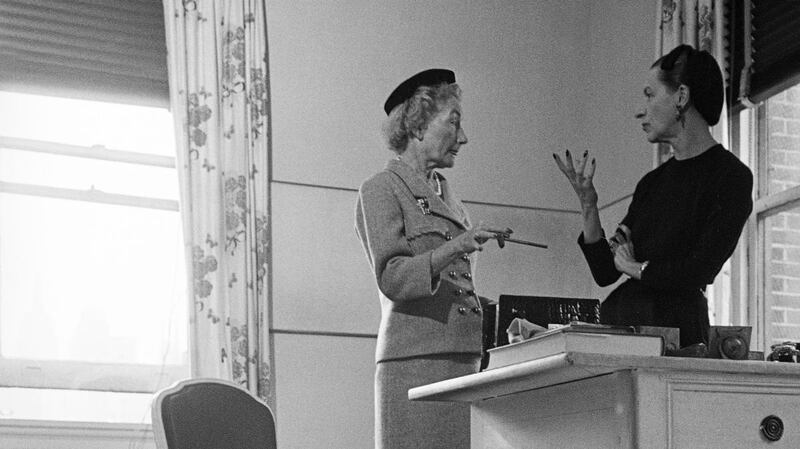The recently widowed Annie White was charged with managing the Irish Village Concession at the 1893 Chicago World Fair following the untimely death of her husband. Officially titled the "World's Columbian Exposition" it was a melting pot of cultures, styles and creative expression. Nations and empires sought to outdo each other by highlighting the technical and artistic achievements of their citizenry and subjects, and for a six month period it no doubt felt as if the entire world had arrived on the Windy City's doorstep.
White was clearly reluctant to return to her old life in Dublin, so instead she opted to stay in the United States, initially in Chicago, where she opened an Irish handicrafts shop. After saving up enough money she paid for two of her six daughters to join her in America, one of whom, 8-year-old Carmel, would follow her mother into the fashion industry.
Carmel would be educated at a number of schools in Iowa, Illinois and Belgium before settling in New York with her mother and new stepfather, Edward Van Pelt Douglass. Annie was now running one of the city's most successful custom dressmaking shops, and the company employed more than 250 fitters and seamstresses. Under her management it grew even more profitable and the young Carmel began to take an interest in and to assist her mother in overseeing the shop and workrooms. The industry demanded a keen eye and a strong work ethic, and in order to keep up with the latest trends across the Atlantic Carmel would accompany her mother on her frequent buying trips to Paris, a city she would grow to love.
With the outbreak of the first World War, Carmel made the decision to enrol with the Red Cross and return to Paris where the young Irishwoman’s dedication and remarkable work ethic won her the admiration of her superiors and saw her charged with overseeing all female personnel within the city. Her time in the city was well spent – she strengthened her industry connections and became far more self-confident. After the war ended she returned to New York with glowing references and a desire to strike out on her own.

She began writing about the latest French fashions for the New York Times and in 1921 was recruited to work for Vogue magazine as Assistant Fashion Editor. She quickly established herself as an authority on all things style related. She also became a mainstay of the New York social scene. Five years later she married fellow socialite George Palen Snow, an independently wealthy stockbroker, and they would go on to have three daughters together but would tragically lose their only son to complications at birth.
Now in her early 40s Carmel Snow, as she was thereafter known, was promoted to American editor of Vogue but increasingly came in to conflict with her superior, Edna Woolman Chase, the magazines managing editor over her refusal to allow her staff to alter the magazines house style or to try more creative approaches to fashion photography. Her brother had become general manager of the rival Hearst publishing house and she decided to leave Vogue to take up a position as Fashion editor of Harper's Bazaar. She had a transformative impact on the somewhat crude and dated magazine, and proved such a success that she was appointed its editor in 1935. She assembled a pioneering design team that included the legendary Diana Vreeland, as fashion editor, who had up until that point had no previous experience. Her house photographer was Martin Munkasci while Alexey Brodovitch became the magazines art director. To say that she reshaped the magazine in her own image is an understatement.
Snow helped to introduce foreign authors to an American audience including Frank O'Connor and Sean O'Casey, and gave Truman Capote his first major platform. Her decisions and utterances carried weight and her determination to transform he readership into "well dressed women with well-dressed minds" meant literature and theatre were also given significant coverage. Bridging the gap between European and American fashion as she did, she was responsible for launching both Christian Dior and Cristóbal Balenciaga in the US market. Closer to home Irish designer Sybil Connolly also owes part of her breakthrough across the Atlantic to Snow.
After dominating the New York fashion scene for close to two decades she was eventually forcibly retired in 1957. A prolific drinker, her fondness for liquid lunches did her no favours and she departed New York for rural Mayo the following year but, finding it lonely, would return to the Big Apple in 1961 just before her death.
Though her star had diminished her funeral was a huge society affair and the Irish fashionista who had helped rescue the post-war French fashion industry and shaped the New York social scene for decades should be better remembered. She was never afraid to take risks or make her opinions known. As she herself once said: “Elegance is good taste plush a dash of daring”.


















